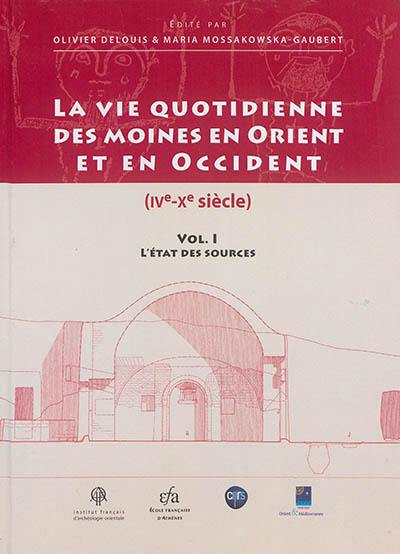
Fiche technique
Format : Relié
Nb de pages : XIV-549 pages
Poids : 2037 g
Dimensions : 21cm X 28cm
ISBN : 978-2-7247-0655-0
EAN : 9782724706550
Quatrième de couverture
La vie quotidienne des moines en Orient et en Occident
Le monachisme chrétien est né en Égypte vers la fin du IIIe siècle. Celui-ci s'est ensuite rapidement propagé dans toute la Méditerranée orientale, puis au-delà. Devenir moine impliquait alors non seulement un choix spirituel, mais aussi l'acceptation d'un mode de vie conforme à des exigences pratiques énoncées de manière plus ou moins formelle.
Issu d'un colloque tenu à Athènes en 2009 dans le cadre du programme collectif Vie quotidienne des moines en Orient en Occident (IVe-Xe siècle), cet ouvrage propose une approche pluridisciplinaire en rassemblant vingt articles autour d'une question fondamentale : l'état des sources disponibles pour étudier les divers aspects du quotidien des moines.
Autour de cette problématique se croisent des témoignages aussi bien archéologiques qu'écrits - normatifs, littéraires et documentaires - répartis en six zones géographiques, allant de la Mésopotamie du Nord jusqu'à l'Irlande. La démarche permet de mieux comprendre les modalités de diffusion du monachisme, une forme de vie chrétienne à la fois essentielle et variée, qui a durablement marqué les sociétés de l'Antiquité tardive et du haut Moyen Âge.
Christian monasticism emerged in Egypt at the close of the 3rd century and spread rapidly to the whole Eastern Mediterranean area and beyond.The choice of a monastic life was more than a spiritual decision ; it implied acceptance of a way of life that conformed to more or less formal rules.
Originating from a colloquium that was organized in Athens in 2009 within the framework of a collective program, Everyday Life in Eastern and Western Monasticisms (4th-10th century AD), this book brings twenty articles illustrating an interdisciplinary approach to an important question : the state of the sources available for the study of various aspects of monks' daily life.
Both archaeological and written evidence - normative, literary and documentary - is presented according to six geographic zones, from northern Mesopotamia to Ireland. This approach yields a better understanding of the dissemination of monasticism, an essential and yet varied form of Christian life, which had a lasting impact on the societies in late Antiquity and the early Middle Ages.





